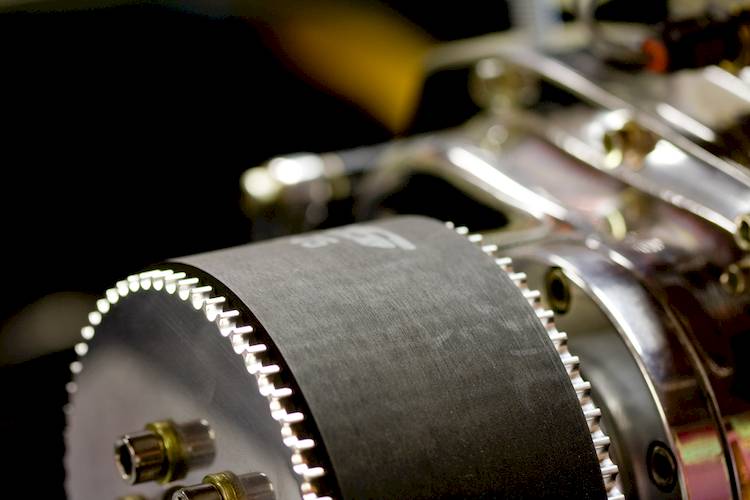

When Phil and Marion Roots filed a patent in 1860 for the first supercharger little did they know that their power-adder originally intended for blast furnaces would revolutionize hot rodding, motorsports, and even the OEM automotive world. Since those days, automotive pioneers like engineer Rudolph Diesel, hot rodder Barney Navarro, and drag racer Mert Littlefield have created multiple automotive uses for superchargers from street to strip applications. The lifeline of the supercharger is the blower belt, mechanically driven by a system of gears and pulleys that spin a set of blades inside the supercharger housing to force more air into the fuel intake manifold, thus creating more horsepower.
Since the supercharger belt is so critical to the efficient operation of a supercharged engine, ensuring that the blower belt is intact and in good shape is a critical part of a routine service that anyone should perform. However, like any other mechanical device, the supercharger belt will eventually wear out, leading eventually to complete failure. If a blower belt breaks while the vehicle in in operation, it can lead to minor problems like less engine performance or rich fuel situations to serious mechanical problems ranging from cylinder head hardware failure to breaking connecting rods.
There are a few warning signs that will show up that any owner of a supercharged engine should be aware of that may indicate a problem with the supercharger belt. Here are some of the common symptoms of a bad or failing supercharger belt.
1. Ticking sound coming from the motor
One of the hardest things to diagnose without frequent visual inspection is when a supercharger belt is wearing out and needs to be replaced. However, one of the very subtle warning signs of this situation occurring is caused by a frayed supercharger belt that is hitting the belt guard or other pulleys that help to power the supercharger. This sound will be similar to a knocking engine or a loose rocker arm, and will increase in volume as the blower accelerates. If you hear this ticking sound coming from the motor, pull over and inspect the supercharger belt for any frays, strings or excess rubber that might be coming apart.
2. Decreased fuel efficiency
Some of today's high end performance cars are powered by superchargers that utilize a supercharger belt to turn the rotors inside to produce higher volume of air that can be mixed with more fuel to produce more horsepower. When the supercharger belt is wearing thin and breaks, the supercharger will stop spinning, however, unless the fuel is manually trimmed or adjusted by electronic fuel injection, raw fuel will not burn inside the combustion chamber. This will lead to a "rich" fuel condition and waste a tremendous amount of fuel.
Anytime you have a broken supercharger belt, it's advised to park the car until a new belt in installed by a professional mechanic who will also ensure ignition timing and other critical components on the car are properly set.
3. Immediate loss in power
When the supercharger belt Power suddenly breaks, it stops spinning the supercharger. Once the supercharger stops turning the screws or blades inside the supercharger, it will not be forcing air into the manifold and thus robbing the engine of a tremendous amount of horsepower. In fact, in today's modern NHRA Top Fuel Dragster, the loss of the supercharger belt will completely drown the cylinder with raw fuel, causing the engine to completely shut off. Although the average street car does not supply fuel at 1/10th the volume of these 10,000 horsepower monsters, the same condition occurs, causing instant lack of power under acceleration.
Typically, the owner of a vehicle with a supercharger will be quite astute with recognizing the symptoms associated with a broken or worn supercharger belt. However, if you notice any of the above warning signs, it's best to stop driving the vehicle and ensure the supercharger belt is replaced, pulleys adjusted, and ensure ignition timing is set properly. If you don't have the experience to complete this work, contact an automotive engine performance expert in your area.



